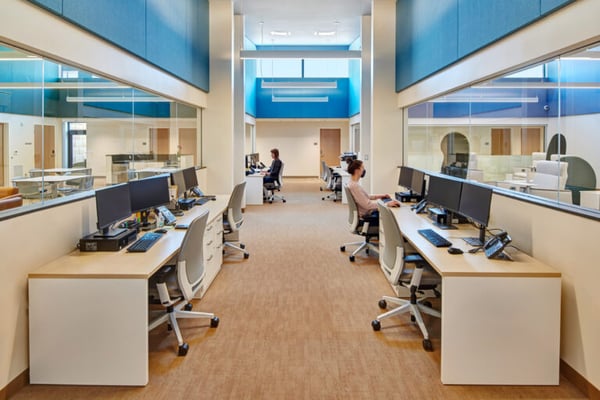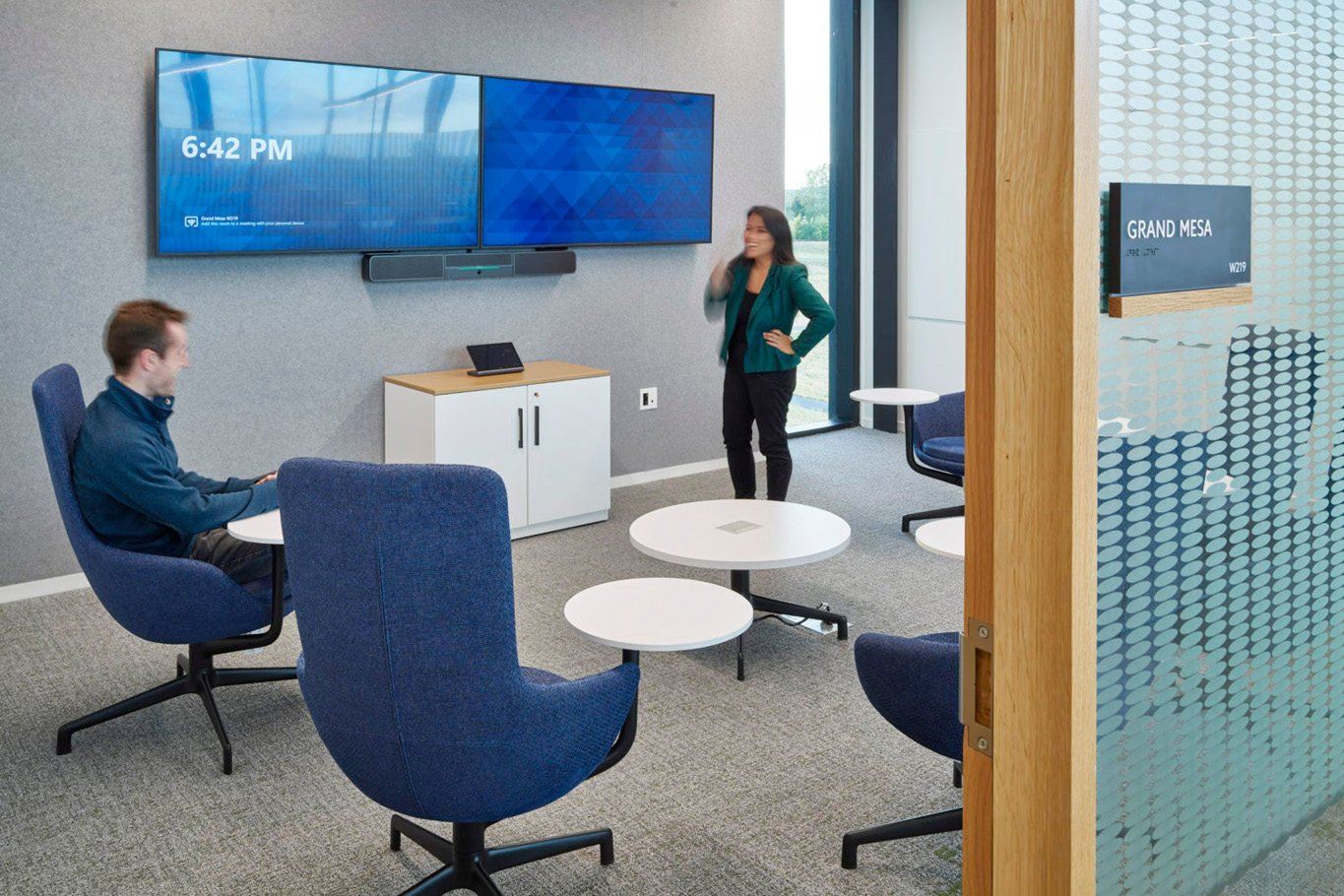Building projects are not limited to the design and construction of the building. As a building owner, you also need to plan for the moveable parts within the building, including the furniture, electronic systems, and decorative items.
In the world of architecture and construction, these moveable items are called Furniture, Fixtures, and Equipment (FF&E).
Selecting FF&E can be a complex process that requires coordination between multiple parties. Luckily, an architect or interior designer can help. At Neumann Monson, we have helped many clients through the process of selecting and purchasing FF&E—including commercial organizations, healthcare, and school districts.
This article will help you prepare by answering the following questions:
- What is FF&E?
- How much does FF&E cost?
- What is the process of selecting FF&E?
- How can you prepare?
After reading, you will better understand the types of items you need to select, how much to budget for these items, and when to involve a vendor.
What is FF&E?
FF&E is anything outside the construction package that is a part of the building. These items can include:
- Furniture: desks, chairs, tables, sofas, beds
- Fixtures: lamps, artwork, shelving, and other decorative items
- Equipment: computers, servers, monitors, and special equipment for your industry
FF&E does not include casework like built-in desks or shelving. Other immovable building parts like faucets and toilets do not count as FF&E. Instead, these items are a part of the construction budget.
In short, FF&E is anything that is not “attached” to the building. If you were to turn the building upside down and shake it, FF&E is everything that would fall out.

FF&E can include equipment like computers, servers, and monitors.
How Much Does FF&E Cost?
Generally, you can expect to spend at least 10% of your construction budget on FF&E. The cost depends on the size and complexity of your project, however.
For example, hospitals tend to have higher FF&E budgets than other project types because they require specialized medical equipment. The durability and quality of the items you select also impact the budget.
Remember, construction packages do not include FF&E. Instead, you will need to account for this additional project cost when planning your overall budget.
What is the Process of Selecting FF&E?
Most building owners work with local vendors to purchase FF&E products. The number of vendors you work with depends on your needs.
Commercial office owners may work with a single furniture vendor, while hospitals may need to work with multiple vendors to acquire medical equipment.
An architect or interior designer can help you contact vendors through a Request for Proposal (RFP) or bid package.
RFP Process
When you take the RFP route, the vendor largely leads the process. Your architect or interior designer will help you write an RFP and solicit proposals from local vendors.
You will then have the option to interview vendors and visit their showrooms before signing a contract. Your selected vendor will become your main point of contact, and you will meet with them frequently to test and select products.
Your architect or interior designer will join meetings to discuss design elements like color choices and how FF&E should fit into the architecture. Although the vendor will lead the process, your design team should stay involved to create a cohesive interior.
Bid Process
With a bid route, your architect or interior designer will lead the process. The design team will research products, explore options, and help you make selections.
After, they will write specs for every product, create bid packages, and solicit bids from vendors. Although your design team will select products, you will still work with a local vendor. Working with a vendor helps ensure ordering and installation run smoothly.
Custom Pieces
In addition to typical FF&E products, some clients choose to incorporate custom pieces. Your design team can help you navigate this process by meeting with fabricators and reviewing finishes. They can also create mock-ups and present them to the fabricator to help ensure the custom pieces fit cohesively into the space.
How Can You Prepare?
FF&E is integral to the design of your building. Throughout the design process, you should think about FF&E and how moveable items will fit into the space. You will use these products daily, so take the time to make sure they fit your needs.
We recommend involving a vendor as early as possible. A vendor can join Design Development meetings to learn about your design goals and the needs of the building’s occupants.
Involving a vendor in Design Development will also give you a head start on ordering products. Generally, you should order products 12 weeks before your move-in date.
Depending on the size of your project, shipping and installation can take several weeks. Ordering as early as possible helps the process run smoothly.
We also recommend working with a single vendor—especially for furniture. This approach simplifies the process and gives you a single contact for future repairs and replacements. Initial costs may be higher with a single vendor, but you will likely get better service in the future.
Ready to Learn More?
FF&E encompasses a range of items—from chairs to wall art to internet servers. Don’t think of these items as last-minute additions. They are integral to your building, and you should plan and budget for them from a project’s onset.
Your architect or interior designer should work to guide you through the process. By contacting vendors and joining meetings, your design team can help you find products that fit your needs and aesthetic requirements. Coordination between all parties helps ensure everything is ready to go by your move-in day.
Now that you better understand FF&E, learn about other kinds of selections you will make during the design process by reading our guide to Design Development.
